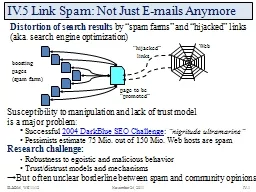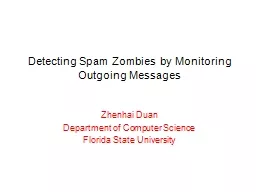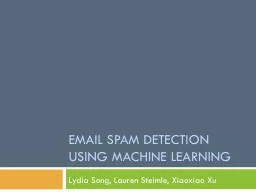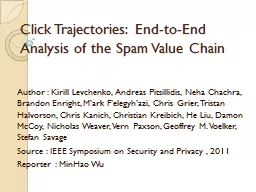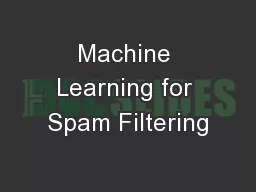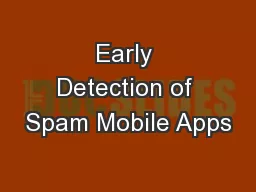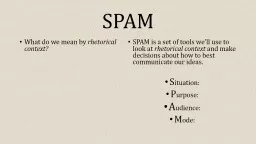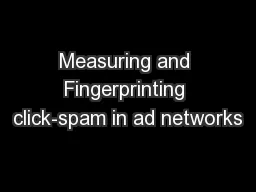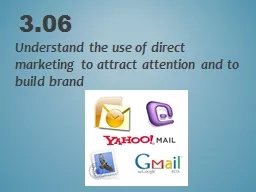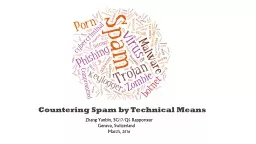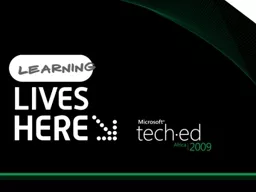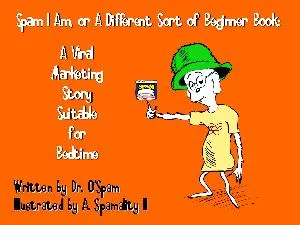PPT-IV.5 Link Spam: Not Just E-mails Anymore
Author : conchita-marotz | Published Date : 2016-08-01
Distortion of search results by spam farms and hijacked links aka search engine optimization page to be promoted boosting pages spam farm Susceptibility to manipulation
Presentation Embed Code
Download Presentation
Download Presentation The PPT/PDF document "IV.5 Link Spam: Not Just E-mails Anymore" is the property of its rightful owner. Permission is granted to download and print the materials on this website for personal, non-commercial use only, and to display it on your personal computer provided you do not modify the materials and that you retain all copyright notices contained in the materials. By downloading content from our website, you accept the terms of this agreement.
IV.5 Link Spam: Not Just E-mails Anymore: Transcript
Download Rules Of Document
"IV.5 Link Spam: Not Just E-mails Anymore"The content belongs to its owner. You may download and print it for personal use, without modification, and keep all copyright notices. By downloading, you agree to these terms.
Related Documents

